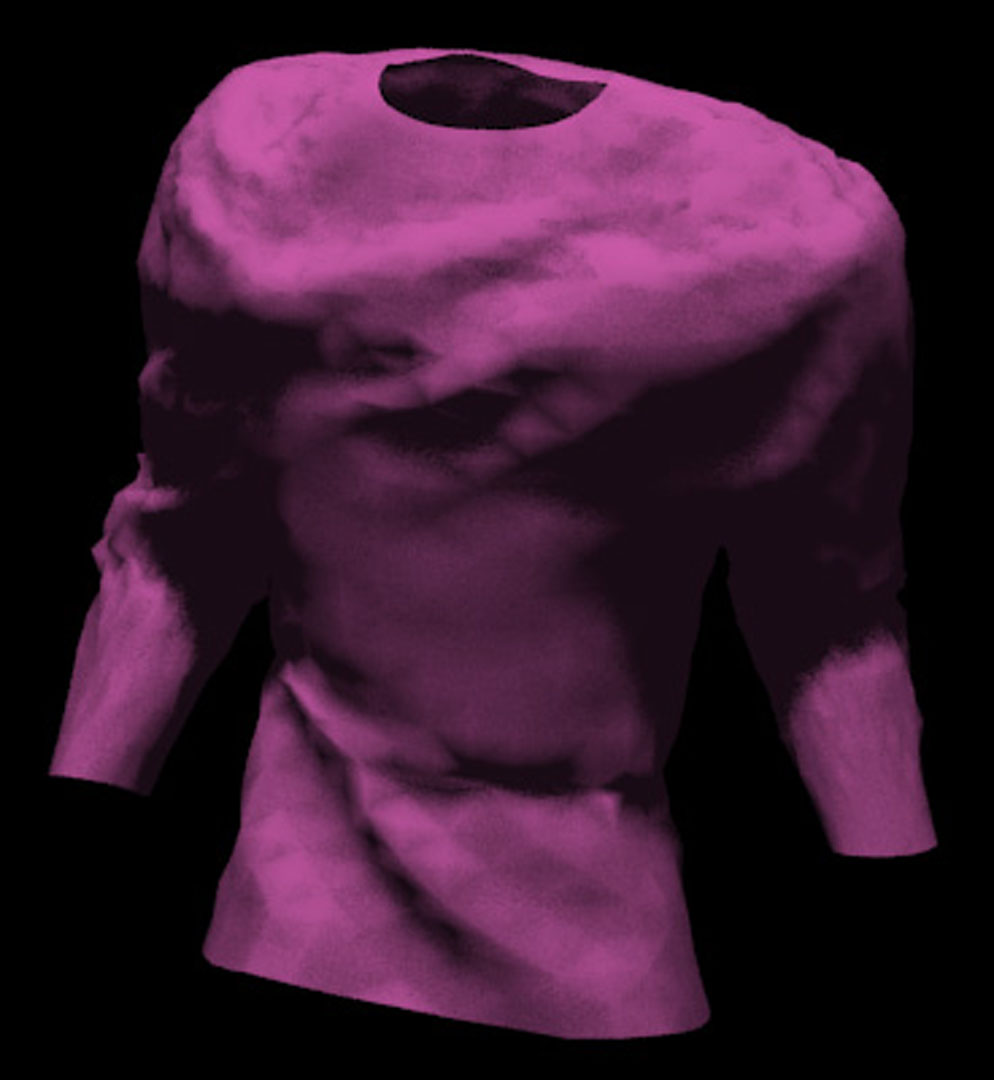“Animating developable surfaces using nonconforming elements” by English and Bridson
Conference:
Type(s):
Title:
- Animating developable surfaces using nonconforming elements
Presenter(s)/Author(s):
Abstract:
We present a new discretization for the physics-based animation of developable surfaces. Constrained to not deform at all in-plane but free to bend out-of-plane, these are an excellent approximation for many materials, including most cloth, paper, and stiffer materials. Unfortunately the conforming (geometrically continuous) discretizations used in graphics break down in this limit. Our nonconforming approach solves this problem, allowing us to simulate surfaces with zero in-plane deformation as a hard constraint. However, it produces discontinuous meshes, so we further couple this with a “ghost” conforming mesh for collision processing and rendering. We also propose a new second order accurate constrained mechanics time integration method that greatly reduces the numerical damping present in the usual first order methods used in graphics, for virtually no extra cost and sometimes significant speed-up.
References:
1. Ascher, U. M., and Petzold, L. R. 1998. Computer Methods for Ordinary Differential Equations and Differential-Algebraic Equations. SIAM, Philadelphia, PA, USA. Google ScholarDigital Library
2. Baraff, D., and Witkin, A. 1998. Large steps in cloth simulation. In Proc. ACM SIGGRAPH, 43–54. Google ScholarDigital Library
3. Bergou, M., Wardetzky, M., Harmon, D., Zorin, D., and Grinspun, E. 2006. A quadratic bending model for inextensible surfaces. In Symp. Geometry Processing, 227–230. Google ScholarDigital Library
4. Bo, P., and Wang, W. 2007. Geodesic-controlled developable surfaces for modeling paper bending. CGF 26, 3, 365–374.Google ScholarCross Ref
5. Brenner, S. C., and Scott, L. R. 2002. The Mathematical Theory of Finite Element Methods (2nd ed.). Springer.Google Scholar
6. Bridson, R., Fedkiw, R., and Anderson, J. 2002. Robust treatment of collisions, contact and friction for cloth animation. ACM Trans. Graph. (Proc. SIGGRAPH) 21, 3, 594–603. Google ScholarDigital Library
7. Bridson, R., Marino, S., and Fedkiw, R. 2003. Simulation of clothing with folds and wrinkles. In Symp. Comp. Anim., 28–36. Google ScholarDigital Library
8. Choi, K.-J., and Ko, H.-S. 2002. Stable but responsive cloth. ACM Trans. Graph. (Proc. SIGGRAPH) 21, 3, 604–611. Google ScholarDigital Library
9. Falk, R. S. 1991. Nonconforming finite element methods for the equations of linear elasticity. Math. Comp. 57, 196, 529–550.Google Scholar
10. Goldenthal, R., Harmon, D., Fattal, R., Bercovier, M., and Grinspun, E. 2007. Efficient simulation of inextensible cloth. ACM Trans. Graph. (Proc. SIGGRAPH) 26, 3, 49. Google ScholarDigital Library
11. Hauth, M. 2004. Visual Simulation of Deformable Models. PhD thesis.Google Scholar
12. Irving, G., Schroeder, C., and Fedkiw, R. 2007. Volume conserving finite element simulations of deformable models. ACM Trans. Graph. (Proc. SIGGRAPH) 26, 3, 13. Google ScholarDigital Library
13. Kang, Y. M., and Cho, H. G. 2002. Bilayered approximate integration for rapid and plausible animation of virtual cloth with realistic wrinkles. In Computer Animation, IEEE Computer Society, 203–214. Google ScholarDigital Library
14. Kergosien, Y. L., Gotoda, H., and Kunii, T. L. 1994. Bending and creasing virtual paper. IEEE Comput. Graph. Appl. 14, 1, 40–48. Google ScholarDigital Library
15. Liu, Y.-J., Tang, K., and Joneja, A. 2007. Modeling dynamic developable meshes by the hamilton principle. Comput. Aided Des. 39, 9, 719–731. Google ScholarDigital Library
16. Peters, J., and Reif, U. 1997. The simplest subdivision scheme for smoothing polyhedra. ACM Trans. Gr. 16, 4, 420–431. Google ScholarDigital Library
17. Provot, X. 1995. Deformation constraints in a mass-spring model to describe rigid cloth behavior. In GI, 147–154.Google Scholar
18. Provot, X. 1997. Collision and self-collision handling in cloth model dedicated to design garment. GI, 177–89.Google Scholar
19. Schenk, O., and Gärtner, K., 2006. On fast factorization pivoting methods for symmetric indefinite systems.Google Scholar
20. Tsiknis, K. D. 2006. Better cloth through unbiased strain limiting and physics-aware subdivision. Master’s thesis, University of British Columbia.Google Scholar
21. Volino, P., and Magnenat-Thalmann, N. 1999. Fast geometric wrinkles on animated surfaces. In 7th Intl. Conf. in Central Europe on Computer Graphics and Visualization (WSCG).Google Scholar
22. Wardetzky, M., Bergou, M., Harmon, D., Zorin, D., and Grinspun, E. 2007. Discrete quadratic curvature energies. Computer Aided Geometric Design, 499–518. Google ScholarDigital Library





